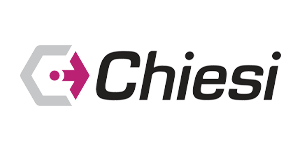- เรื่องราวความสำเร็จของลูกค้า
- Chiesi Group
Chiesi Group achieved this using • SAS® Viya® deployed with SAS® Managed Services on Microsoft Azure
Chiesi Group uses SAS® Viya® to analyze information in a collaborative platform, streamline processes and efficiently deliver trial results to regulatory authorities
To achieve the distinction of being a Certified B Corporation, a company must meet rigorous standards of social and environmental performance, transparency and accountability. Chiesi Group, a global research-focused biopharmaceutical company, has done just that.
Headquartered in Parma, Italy, Chiesi develops and markets innovative therapeutic solutions in respiratory health, rare diseases and specialty care. Just as the company is committed to improving the quality of life for people around the world, it is equally committed to following a sustainable business approach. As Chiesi takes steps to improve the health of patients and the planet, innovation is at the heart of everything it does.
We spoke with Annamaria Muraro, Head of Statistics and Data Management at Chiesi Group, to learn how SAS advanced analytics has helped the company modernize its business practices and foster innovation.
Data is the key element for innovation because it is the spark that triggers discovery or a decision.Annamaria Muraro Head of Statistics and Data Management Chiesi Group
What is the role of data in a business like yours? How important is it from an innovation perspective?
Muraro: There is no research, no innovation without data. We need data at all stages, from drug discovery to preclinical to the completion of clinical development, which can take 10 years or more. During clinical trials, we collect a large amount of data from healthy volunteers and patients to demonstrate drug efficacy and safety. This whole process relies on appropriate trial design, proper data collection, data analysis and interpretation.
Data is the basis of every step of the research, supporting every decision – whether to continue from phase 1 to phase 2, to proceed to phase 3, or to submit a dossier to a regulatory agency. This long journey is shared with regulatory authorities who assess the quality of the data and the strength of the evidence generated.
Data is the key element for innovation because it is the spark that triggers discovery or a decision. In the last decade, we have gone from having data only from randomized controlled trials to having big data from many sources – which we call secondary databases – such as real-world data, data collected from patients that tells us how they are really using a drug.
My motto is “foster the power of data,” and we need to be able to make the data talk to extract useful insights. This requires sophisticated analytics that also integrates artificial intelligence techniques, which was unthinkable just a decade ago.
What were some of the challenges you faced before adopting SAS Viya?
Muraro: SAS has always been our primary data analysis tool, used for data mining, exploratory analysis and regulatory purposes. Chiesi’s growth led to an increase in users, departments and research sites in several countries. The result was that over the years we had many different versions installed on PCs, with different configurations and different modules depending on the department and the role of the users. This made it harder to govern and manage the maintenance of the infrastructure.
We also had several vendors working with our in-house programmers who used SAS on their servers, in different versions, with the frequent need for data and program exchange from the vendors to the Chiesi server. That was not optimal.
Additionally, PC-based configuration left ample room for user customization, which over time created conflicts even within our team, making standardization, reuse and code validation more difficult. We needed a shared environment that facilitated the user to follow standardized processes.
Finally, given the intense data submission activity, we needed to properly document the validation of the system installation and the entire life cycle of the data and programs generating the analysis. This would enable us to be ready in case of inspections by regulatory authorities.
Cloud was the answer. Ultimately, we needed a comprehensive, integrated, standardized and efficient solution, and SAS Viya deployed with SAS Managed Services was the way to achieve that.
What are the lessons learned?
Muraro: The move from PC architecture to the cloud represented a profound transformation in business strategy. Not only from a technological point of view but also in the way people work.
This was an integration project involving different business functions in different countries. It proved critical to use some initial time in sharing and understanding the processes, the needs of each function, and working together to identify common standards. We needed to establish clear governance, the role of each team member and the different partners, as well as good activity planning to maintain the planned timelines.
Dealing with this kind of change requires engaging people early to help everyone understand the value and the benefits. This helps overcome the natural resistance to adopting new processes.
The technology change itself was the least critical, thanks to the excellent leadership of our IT group, and also the significant support we received from SAS and the technology partners who helped us manage the project in its different phases.
Chiesi Farmaceutic – Facts & Figures
7
research centers globally
Italy, France, Sweden, UK, US, Canada, China
3
production sites
Italy, France, Brazil
100
countries with a commercial presence
What are the benefits you are seeing?
Muraro: Now we have a more organic, structured and integrated approach within Chiesi, an optimization of system maintenance and a significant improvement in performance. We also have improvements in the way of working – efficient data exchange with suppliers, standardization of processes, as well as how we document the flow of data to be in full compliance with regulatory requirements. From the audit point of view, we feel much more protected.
All this work has laid the groundwork for us to further explore the potential of the system and identify other areas of development that can help strengthen our data-driven approach.



